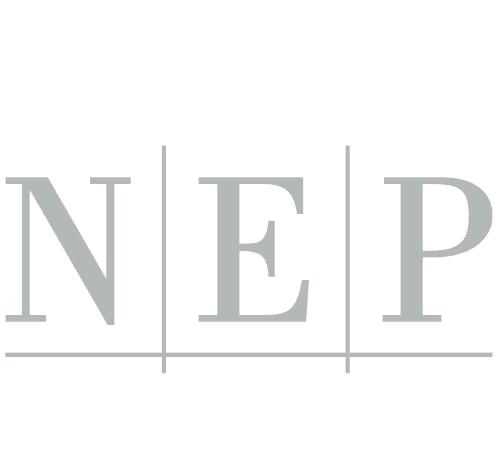
“Strategex provides us with a mechanism to help us understand where our companies are with their customer relationships, where they can improve them, and a mechanism to help improve them. Strategex takes the risk out of the equation.”
Customer due diligence helps investors underwrite the stability of the customer base. It can also generate clear post-close guidance for accelerating profitable market share growth with the customers that matter the most.

Multiples remain stubbornly high while the quality of target companies seems to be on the decline. Now more than ever, investors need more than dry powder and a high-conviction thesis. They need a plan. But, as the saying goes, even the best-laid plans often go awry.
As business cycles shift, the macroeconomic outlook softens, and hurdle rates increase, there must be a clear and pragmatic plan to create value and generate alpha. To help create these plans, we’ve seen an increased reliance on customer insights among private equity and strategic buyers. Many investors already understand the value of using customer insights for due diligence objectives. Now, with increased pressure to start creating value on Day One, investors are realizing that the same customer insight engagements – when done well – can add significant value both pre- and post-close. Here are a few examples.
In B2B transactions, it is not uncommon for us to see heavy customer concentration.
We often observe the top quartile of the customer base typically generates 90% of revenue, and the top 5% of the customer base typically generates 50% of revenue. If one of these key revenue generators were to churn post-close, there would be a material impact on the target’s ability to generate future cash flow.
Identifying at-risk accounts pre-close allows management teams to start executing retention strategies on Day One; they can proactively mitigate customer concentration risk. For example, we recently helped a portfolio company secure at-risk accounts and improve its Net Promoter Score by 40 points by implementing Key Account Management and Raving Fan programs.
Every industry is undergoing significant levels of disruption. In times of heightened competitive pressure, fluctuating customer preferences, and lowered switching costs it is not enough to simply meet the expectations of your top accounts. You must exceed expectations. A customer experience that meets expectations is table stakes.
Real customer value is only created when the CX is intentionally designed to surprise and delight your top accounts.
A guess-and-test approach to improving the CX takes time; management teams don’t have the luxury of time. Rather than guessing where a company is falling short of expectations and what it needs to do to get better, why not ask top customers directly? And instead of getting topical satisfaction scores from an online survey, why not conduct robust in-depth qualitative interviews to understand specifically what must be done to improve? And while you’re at it, check out some of our best practices for creating a world-class customer experience and tips for effectively using digital tools to create a personalized experience.
One of the fastest ways to create value is not by investments in marketing, bolting-on companies, or gaining cost efficiencies. It is by selling more to the customers you already have. While this sounds simple, it is by no means easy since a company first must earn the right to grow by gaining loyalty (see Example 1: Use customer due diligence to retain at-risk accounts) and exceeding customer expectations (see Example 2: Use customer due diligence to optimize the customer experience).
Management teams also need in-depth competitive analysis. For example, they need to know their current wallet share and why they are losing business opportunities to the competition. Armed with these insights, a competitive strategy can be deployed. Customer insights shed light on a company’s competitive advantages, weaknesses, and points of parity and disparity. From there, a compelling differentiator can be established to steal share from the competition. Check out this case study to see how we helped a manufacturing company boost its topline by $14M in just six months by increasing wallet share with its largest account.
Another fast way to create value is by raising prices, but unless you’re in a price inelastic category this can be a scary proposition since it will trigger some customer attrition. However, the key question is which customers will leave? Will you lose customer 9,435 who generated $13 in sales, or will you lose your largest customer that generated $13M in sales? With the correct price strategy in place, you can control who leaves and who stays.
Customer due diligence can not only validate the sustainability of a price increase, but it can ensure that key relationships will not be damaged by doing so. Check out Our Three Questions to Answer Before Raising Prices for more guidance.
We’ve all heard the stat: roughly 95% of new product launches fail. The reason behind so many of these failures is because R&D and product management teams often design solutions that nobody asked for. They are distracted by all the things we can do and forget about the things we should do. But who is the arbiter of what’s right and wrong? The customer (AKA the person paying you for your stuff)!
Remember: customers determine a product’s success.
It is important to connect with them to unlock a deep understanding of their pain points and unmet needs, which may represent opportunities for successful innovation. Further, customer insights can guide user-centric design.
In M&A deals, it is rare to fully realize expected cost synergies which means the most effective value creation lever is topline growth. Customer due diligence helps investors underwrite the stability of the customer base. It can also generate clear post-close guidance for accelerating profitable market share growth with the customers that matter the most.

Revenue Growth
$14M
Our client used customer insights to grow revenue at its top account by $14M (in just 6 months).
Related Content
How do you know your acquisition target has the secure customer base they claim? You conduct Customer Due Diligence research with Strategex. We've got 30+ years of experience researching and analyzing customers. And, we support $6B in transactions every year.

Anthony Bahr is Managing Director of Strategex’s Customer Due Diligence practice – a revolutionary practice area that’s disrupting private equity. He has worked with over 50 private equity firms on countless transactions to prevent deal failure.
Before joining Strategex, Anthony held senior-level positions at two leading market research firms where he specialized in insight, strategy, and innovation projects for global financial services, consumer packaged goods, and pharmaceutical clients.
A veteran of the United States Air Force, Anthony holds a B.B.A. in economics and international business from Loyola University Chicago as well as an M.S. in public policy from the University of Oklahoma.
Our Customer Due Diligence Clients love us. Here's what some of them have to say.

“Strategex provides us with a mechanism to help us understand where our companies are with their customer relationships, where they can improve them, and a mechanism to help improve them. Strategex takes the risk out of the equation.”

“Our Management team really values that work and the end report, more so than the quality-of-earnings report and some of the other financial analysis.”

“Good customer due diligence allows us to leverage some of the positive aspects of a company while surfacing competitive risks and exposures at the same time. We rely heavily on the Net Promoter Score which influences how we think about the potential for future market share gains and losses.”

“Strategex’s work is maybe the most important aspect of due diligence. The investment will either likely be a success or not a success depending on how we respond to what we heard during the CDD. It’s totally invaluable.”


WATCH NOW: The Executive’s Guide to Fast Value Creation

WATCH NOW: The Executive’s Guide to Fast Value Creation

Celsius: What happens when you freeze customer accounts?

Celsius: What happens when you freeze customer accounts?

The 80/20 Rule Is Brutal. That’s Why It Works.

The 80/20 Rule Is Brutal. That’s Why It Works.
Contact us to see how we can help your business today.
Never miss a beat. Get our latest insights in your inbox.